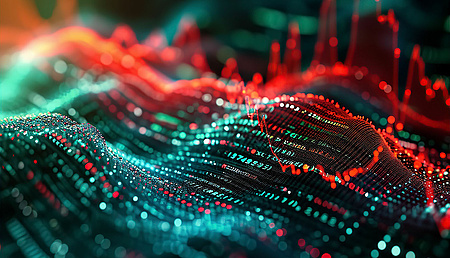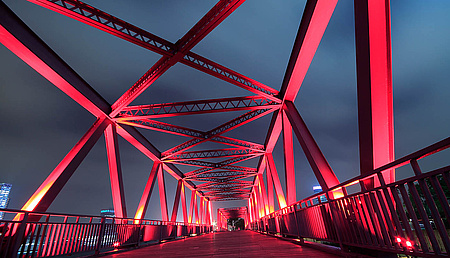
How are damages calculated in patent infringement cases?
Not only does patent infringement forestall individual innovation, but when occurring unimpeded on a broad scale, it also effectively puts entire markets into holding patterns. If your rights as an inventor are violated in this fashion, you can sue in the appropriate civil court to stop it, setting yourself up to recoup associated monetary losses.
How that compensation is determined depends on several factors. Understanding these ins and outs is critical to ensuring the best and fairest results everywhere you or your organization hold patent protections.
Core elements of the calculation
For our purposes in this article, we will take it as a given that the hypothetical cases discussed have gone to court and concluded in the plaintiff's favor.
Most major legal jurisdictions, including the United States, United Kingdom, numerous European Union member states, Japan and China, use the plaintiff's lost profit as the baseline for calculating damages. In some circumstances, licensing fees that could otherwise have been earned and / or profits gained by the infringer are considered.
In most Intellectual Property (IP) law disputes, the degree of harm done to the plaintiff is key to evaluating how much they must be compensated through damages. Here, specificity in the infringement argument is paramount. To receive optimal recompense, you and your legal team must outline and prove infringement with as much demonstrative evidence of financial and reputational damage as possible. If this sounds like something you need help with and want our team of experts by your side:

The assessment of licensing fees that could have been earned has become particularly important in disputes relating to the licensing of standard-essential patents (SEPs) on fair, reasonable and non-discriminatory (FRAND) terms. In such cases, courts have been required to address issues such as whether a FRAND license would be global and the proportional significance of the patented technology to the SEP. This assessment often involves the analysis of several comparable licenses.
Notable regional differences
You can file infringement cases in any country where you hold legal rights over an infringed-upon invention. Nevertheless, it is vital to remember that the differences between IP laws in each national venue may mean your recovered damages are notably less in one nation than in another. By the same token, these variances could even lead to your infringement claims being confirmed in some countries and refuted in others.
International frameworks such as the Agreement on Trade-Related Aspects of Intellectual Property Rights (TRIPS) guarantee a minimum standard of protection for the violation of IP rights in all signatory countries but do not prescribe specifics beyond that. Therefore, it is imperative to know the disparities between the laws of major nations or regions.
United States: American courts use lost profits and the failure to collect a reasonable fee from a licensee to calculate a damages award. Determination of the former depends on proving notable demand for the infringed invention and demonstrating you could manufacture and market the IP as your own product or service. "Enhanced" (i.e., punitive) damages may also be awarded in cases of willful infringement, maxing out at three times the figure arrived at after standard calculation.

Additionally, since 2018's WesternGeco LLC v. ION Geophysical Corp ruling in the U.S. Supreme Court, profits lost in foreign markets for IP patented in the United States can factor into final damage calculations. (This is not considered in numerous other countries.)
European Union: Although IP rights violations are covered by Article 13(1) of the Enforcement Directive (2004 / 48 / EC), EU member states are largely left alone to determine infringement damages based on national laws. Certain baseline metrics must be considered, however:
"... negative economic consequences, including lost profits, which the injured party has suffered, any unfair profits made by the infringer and, in appropriate cases, elements other than economic factors, such as the moral prejudice caused to the right holder by the infringement."
This leads to various minor differences between damages calculations in EU nations. For example, in the Directive, punitive or exemplary damages for patent infringement are discouraged but not expressly forbidden, yet Germany and France prohibit them entirely. As such, in the former nation's case, foreign punitive damages awards would likely not be enforceable. Italy, meanwhile, divides infringement into distinct categories (innocent, negligent, grossly negligent and willful). This leads to wildly varying damage amounts.
United Kingdom: Determinations of license violation are straightforward under the Patent Act ("capitalized value of the royalties that the infringer would have paid [via license]"). Restitution for infringement not involving license violation (e.g., of a patent for which the holder was not issuing licenses) is calculated using sales by the infringer, damage to the inventor's own sales and a "reasonable royalty on sales by the defendant."
Infringement damages should not be punitive under British law. Nonetheless, there is room for "exemplary damages" when the infringement was willful, and the infringer believed they would earn more by breaking the rule than the sum of any restitution paid if caught. (As you might imagine, this is not easy to prove.)
Japan: Three formulas can determine Japanese infringement damages:
- Sales quantity of infringing product multiplied by marginal profit per unit on the plaintiff's product
- Total marginal profit earned by the infringer
- The equivalent of license fees owed
Depending on factors including the severity of the infringement, the plaintiff's brand power and the market presence of competitive non-infringing products, the sums reached through any of those standards may be reduced in final awards.

China: More often than not, Chinese courts award infringement damages based on standards now familiar to us, viz., the patent holder's losses, infringer profits earned and the estimated lost licensing revenue. However, in some cases, China opts for statutory judgments of a set amount (no more than CNY 5 million / USD 769,000). This usually occurs when it is difficult to determine a just amount using existing standards.
Limitations and other caveats
All countries put a statute of limitations on how long you can wait before filing a claim once you become aware of an infringement. If you do not make the cutoff, you cannot file. Examples include:
- United States: six years
- European Union: The Directive offers no minimum or maximum; individual countries have their own limits. In Germany, it can be as few as three years or as many as 30 but usually falls between three and 10. In France, the limit has been five years since 2014.
- United Kingdom: six years
- Japan: three years
- China: two years
The calculation of patent infringement damages is also relevant in the exceptional case of compulsory licensing. This particular facet of law has come under scrutiny in light of the recent discussion about patents for COVID-19 vaccines. Article 31 of the TRIPS Agreement provides for the use of the subject matter of a patent without the authorization of the patent holder in the event of "a national emergency or other circumstances of extreme urgency." In such an instance, the right holder shall be paid "adequate remuneration in the circumstances of each case, taking into account the economic value of the authorization." However, compulsory licenses have rarely been granted to date.
The burden of proof is always on the plaintiff in patent infringement, and a rushed claim may fail because it does not provide sufficient evidence of rights being violated. Assistance from Dennemeyer's IP law services and patent litigation experts can ensure your infringement claim holds up in multiple jurisdictions, earning you back the profits you rightfully deserve from your patented inventions.
Filed in

What are the three pillars of IP innovation, and how can C-suite members maximize the value of assets that are, by definition, less than concrete?



